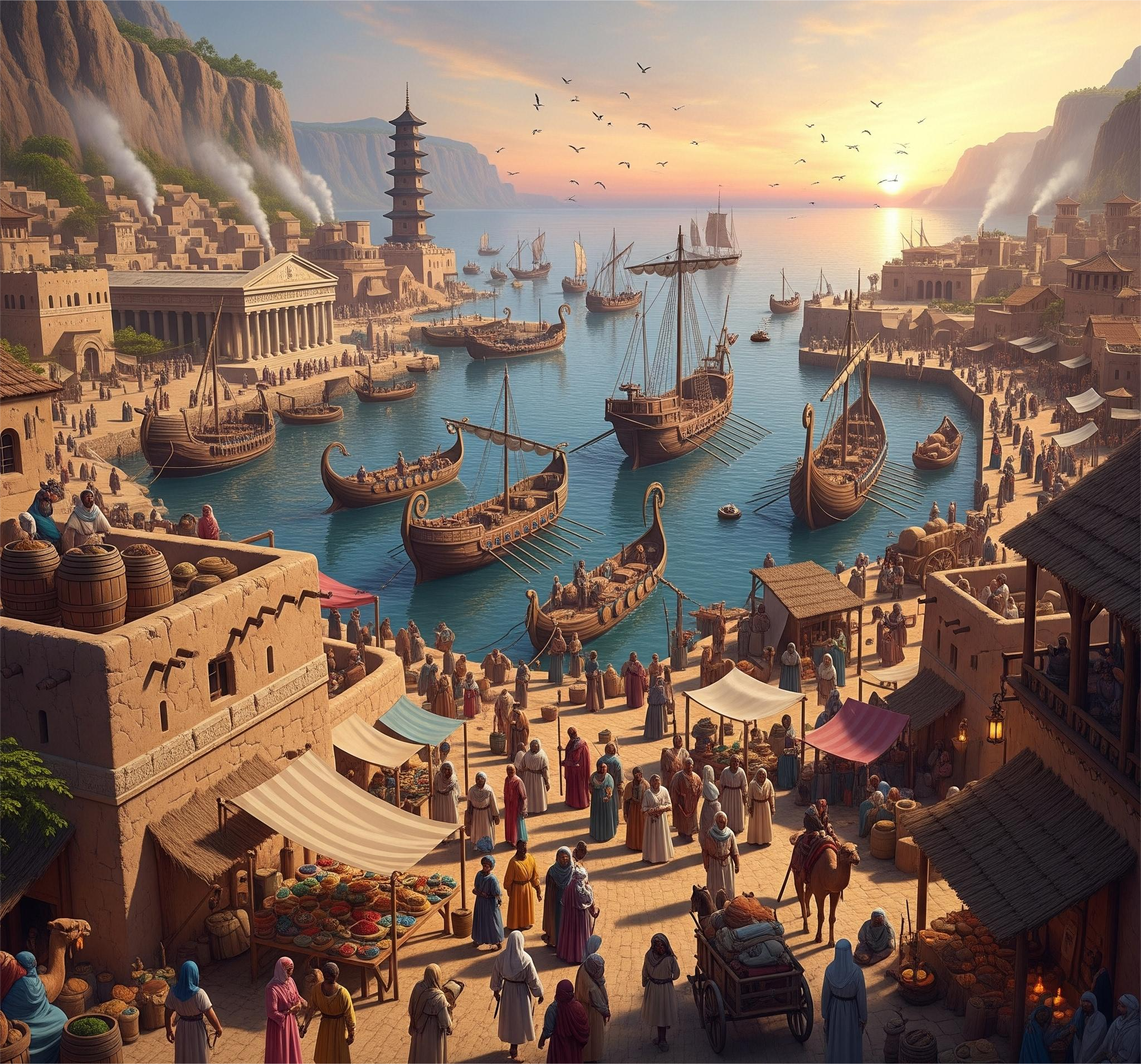Before the age of modern shipping containers and international commerce agreements, trade flowed across the ancient world through a powerful network of port cities. These urban hubs—perched strategically on coasts and river mouths—acted as the beating hearts of empires, enabling the exchange of goods, ideas, cultures, and technologies.
Among the most influential of these were Carthage, Alexandria, and Byblos. Each played a critical role in forging early economic globalization and cultural integration across the Mediterranean and beyond.
Carthage: The Maritime Empire of the Western Mediterranean
Location: Present-day Tunisia
Founded: c. 9th century BCE by Phoenician settlers from Tyre
Carthage was a commercial powerhouse, known for its impressive navy and a sprawling trade network that stretched from North Africa to Spain and even Britain.
Why It Mattered:
Trade Network: Carthage controlled key trade routes in the western Mediterranean, facilitating the exchange of olive oil, wine, metals, ivory, textiles, and enslaved people.
Shipbuilding Mastery: Carthaginians developed advanced maritime technology, including fast and durable ships that dominated trade and naval warfare.
Colonies and Outposts: They established trade colonies across the coasts of Iberia and North Africa, expanding their reach and economic influence.
Rivalry with Rome: Their commercial might led to the Punic Wars with Rome—a rivalry that shaped Mediterranean history.
Carthage was more than a trade city—it was a symbol of how commerce could build an empire.
Alexandria: Egypt’s Gateway to the Hellenistic World
Location: Northern Egypt, on the Mediterranean coast
Founded: 331 BCE by Alexander the Great
Alexandria quickly rose to prominence as one of the largest and most important cities in the ancient world. Strategically located at the crossroads of Africa, Asia, and Europe, it became a cosmopolitan center of trade, learning, and innovation.
Why It Mattered:
Harbor of Global Exchange: Its twin harbors attracted traders from Greece, Rome, Arabia, India, and Nubia.
Commodities: Alexandria exported grain, papyrus, glassware, jewelry, spices, and luxury goods, and imported silks, gems, incense, and timber.
Cultural Melting Pot: The city blended Egyptian, Greek, Jewish, and later Roman cultures.
The Great Library: Alexandria's library symbolized the intellectual side of trade—where knowledge became a global currency.
Alexandria’s economic strength was deeply tied to Egypt’s rich agricultural output and its role as a maritime bridge between East and West.
Byblos: The Ancient Script of Trade
Location: Modern-day Lebanon
Founded: c. 5000 BCE (one of the world’s oldest continuously inhabited cities)
Byblos was a Phoenician city that became essential in ancient trade networks, especially during the Bronze Age.
Why It Mattered:
Timber Trade: Famous for exporting Lebanese cedar wood, used to build ships, temples, and palaces across Egypt and Mesopotamia.
Papyri and Writing: Byblos played a crucial role in spreading the early Phoenician alphabet, which would later influence Greek and Latin scripts.
Egyptian Ties: Maintained close trade and cultural links with ancient Egypt, often sending materials in exchange for gold and luxury goods.
Name Legacy: The Greek word for book—biblion—comes from Byblos, highlighting its association with writing and record-keeping.
Byblos reminds us that trade wasn’t just about goods—it also facilitated the exchange of ideas and innovations that shaped civilizations.






